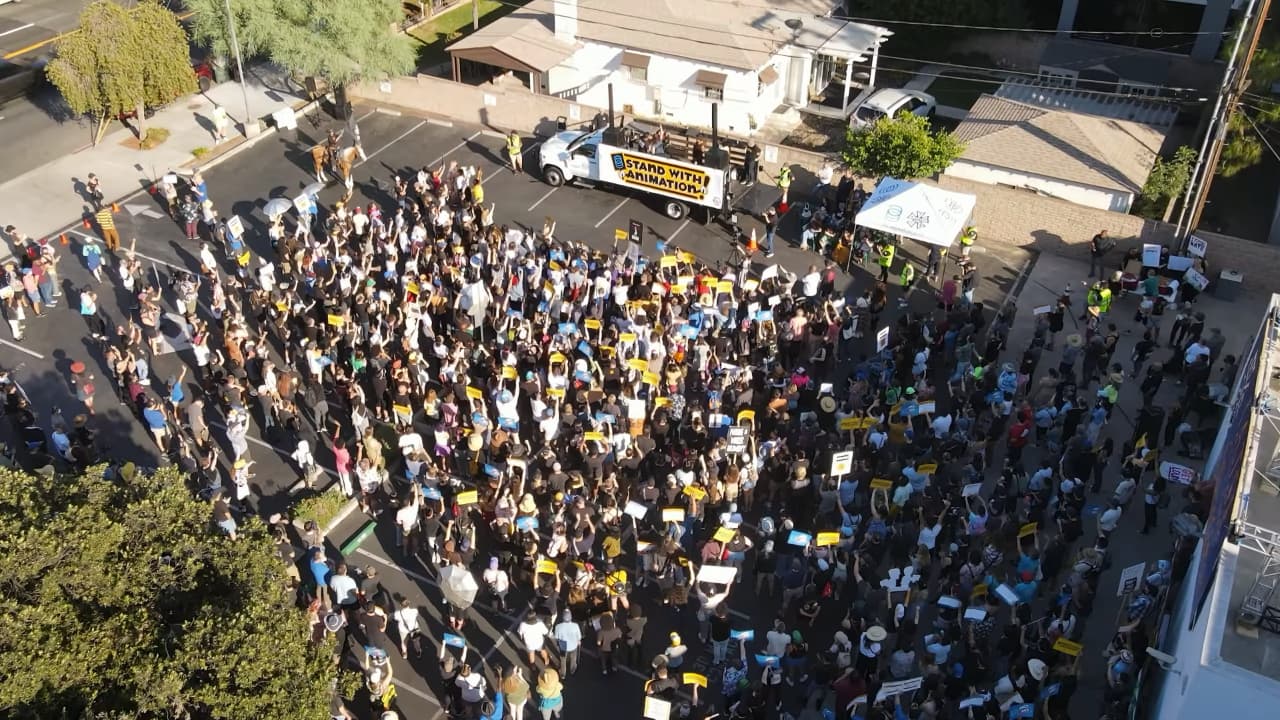
Industrial unrest continues in the US as unions look at advances in AI in particular with extreme suspicion.
Nearly nine months ago, in the fall of 2023, AMPTP reached an agreement with SAG and WGA, ending one of the longest strikes in the entertainment industry’s history.
As we approach the fall of 2024, The Animation Guild (TAG) is locked in negotiations with AMPTP for a new three-year contract. While not as prominent as the SAG or WGA contract negotiations, these negotiations are equally important as they could determine the future of the animation industry in Hollywood.
What’s happening in the animation industry?
The Animation Guild, which represents more than 6000 workers in the animation industry, is currently working to establish a new collective bargaining agreement with the AMPTP. TAG’s previous contract expired on July 31st, 2024, and the extension expired on August 16th, 2024. After a week of negotiations, the guild reported that they have yet to agree on certain issues, such as job displacement and layoffs.
Like the SAG and WGA strikes, a key sticking point is the role of generative AI. Animators across the world face an existential threat as gen AI tools could completely displace their jobs.
For example, Open AI recently teased Sora, its generative text-to-video video tool. The model is still in beta, with Open AI claiming to be working with creatives to make it a helpful tool and launch it safely. That being said, if Sora is perfected, we could see the animation industry, in particular, shift to using AI-generated art. From a producer’s perspective, it’s far more efficient and much cheaper. For an industry where layoffs have become all too common, generative AI could eliminate creative jobs at a truly unprecedented scale.
Another major concern for TAG is the outsourcing of animation jobs to foreign companies. This practice reduces the number of opportunities for skilled workers in the US, forcing some to work for the same foreign companies that studios outsource to. As a result, animators are left without the union benefits and protections they would otherwise have.
Talks to finalize a new three-year contract are expected to resume in mid-September. At the time of writing, we are still very early into the negotiations. However, if both parties are unable to reach an agreement, we might see another labour strike against AMPTP.
The real question is how long can negotiations go on until the union calls for a strike? The answer might lie in SAG-AFTRA’s ongoing strike against video game companies.
SAG continues strike against video game companies
The SAG-AFTRA strike against the video game studios began on July 26th, 2024, marking a pivotal moment in the ongoing struggle for fair treatment. SAG represents thousands of performers, such as voice-over artists or motion capture artists, who fall under their Interactive Media Agreement. After nearly two years of stalled negotiations, the union has decided to take a stand against the top video game companies in the industry. This includes the likes of Activision, Electronic Arts, Epic Games, Insomniac Games, and more.
It’s no surprise that the central issue of the strike involves the protection of performers’ rights with the looming threat of AI. As generative video technologies continue to improve, video game studios are increasingly populating their games with artificially generated content trained on existing performances. The union has raised significant concerns about studios exploiting performers’ voices and likenesses without fair compensation or consent. Once again, creative professionals face an existential threat in AI, as the models trained on their work are now being used to undermine their livelihood.
In terms of revenue, the video game industry dominates the media and entertainment sector, surpassing music, film, and television. Undoubtedly, this strike's outcome will create a ripple across the sector as a whole, setting a potentially dangerous precedent for future labour negotiations.
Looking ahead
As negotiations between the unions and studios continue, the stakes for the animation and video game industry are higher than ever before. While the 2023 labor strikes paved the way for historic agreements, the current strikes and negotiations haven’t garnered the same attention.
With generative AI and job displacement at the forefront, these talks will significantly shape the future of the entertainment industry. As we look ahead to the future, pressure is mounting on both sides to find common ground before the labour disruptions begin to compound.
[Anyone interested in the subject may want to have a read of the following as well: The Disney Artists’ Strike of 1941 Changed Animation Forever — And For The Better. Ed]
tl;dr
- - The Animation Guild (TAG) is negotiating a new collective bargaining agreement with the AMPTP, with concerns about job displacement and layoffs due to generative AI tools.
- SAG-AFTRA is on strike against major video game companies over the use of generative video technologies and protection of performers' rights.
- The outcome of these negotiations and strikes could have a significant impact on the animation and video game industries.
- Pressure is mounting on both sides to find common ground to avoid further labor disruptions.
Tags: Production


Comments